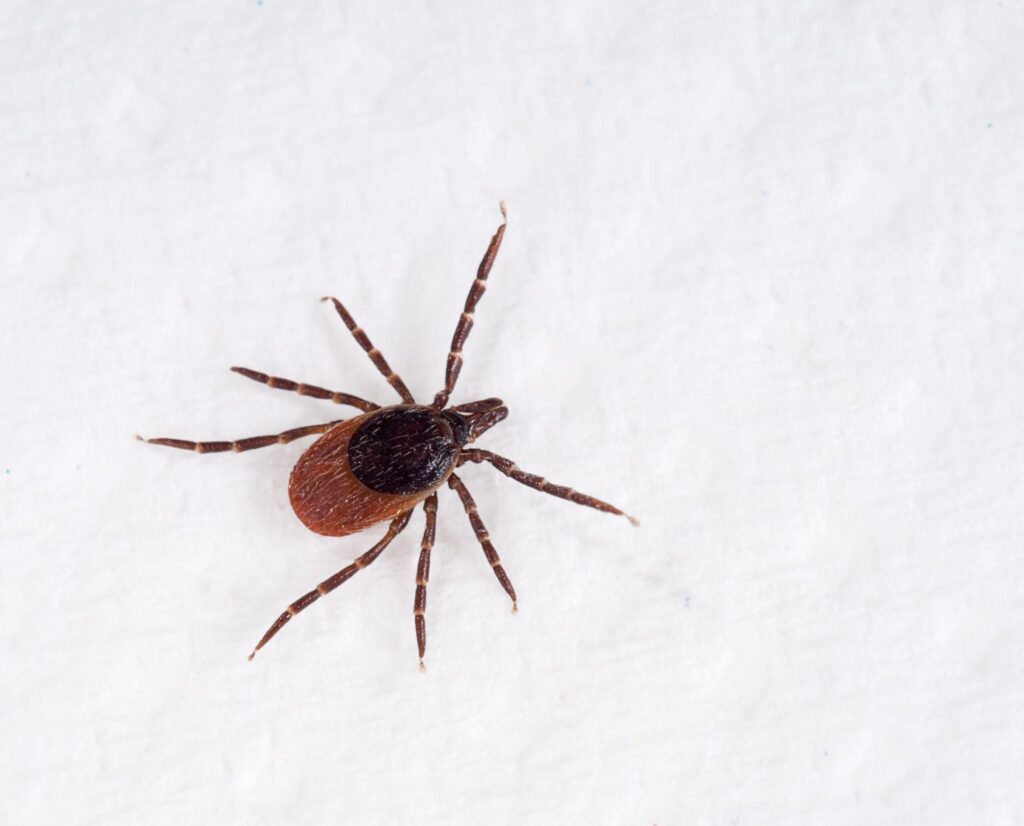Similar to other tick species, the Black Leg Tick, or Deer Tick, is often found in grassy, wooded areas among grassy vegetation and near animal nests or burrows. Unlike the American Dog Tick, this species cannot survive indoors without a host.
Insect Description
Just in time for Halloween, the Black Leg Tick’s body is orange-ish brown while the legs are dark reddish-brown. Adults grow to 1/16th to 1/8th of an inch in length. The bodies are hard with a flat tear-drop-shaped body and easily seen mouthparts. The female has a “shield-like” area that remains unchanged during color as she fills with blood when feeding. The larvae only have six legs while the adults have eight.
Disease
Blacklegged ticks are common transmitters of Lyme disease. Symptoms of Lyme disease include fever, headache, fatigue and a characteristic “bull’s eye”-shaped skin rash. Lyme disease can also affect joints, the heart and the nervous system if left untreated. Annually, more than 30,000 people are infected with this disease.
Control and Extermination Methods of Black-Legged Tick
Ticks can be difficult to control, therefore the services of an experienced pest management company, such as United Pest & Turf Control are recommended. Treatments may be necessary in wooded, high grass or wetland-type areas of a property.
For people working near or enjoying the woods, it’s important to follow these tips to reduce the chance of a tick bite or bringing one home:
- Removing debris and excess ground cover around the area should be done whenever possible.
- Remove food sources such as garbage, pet foods and other materials that may attract potential hosts.
- Cutting grass, weeds and other tall ornamental grasses in areas frequented by humans and pets will reduce the areas where ticks find refuge.
- When in an area where ticks are common, wear long-sleeved shirts and pants, preferably light-colored so ticks will be easy to detect.
- It’s also important to wear a tick repellent. To get rid of ticks and their risks indoors, inspect clothing and skin before heading inside.
- If you find a tick, remove it with a slow and steady pull using fine-tipped tweezers. Do not squeeze the body.
- Consult with a medical professional immediately if there is a reaction at a bite site.
Black Leg Tick in North Alabama and Southern Tennessee
Serving North Central Alabama and South Central Tennessee
Limestone County
Ardmore
Home » Black Leg Tick


